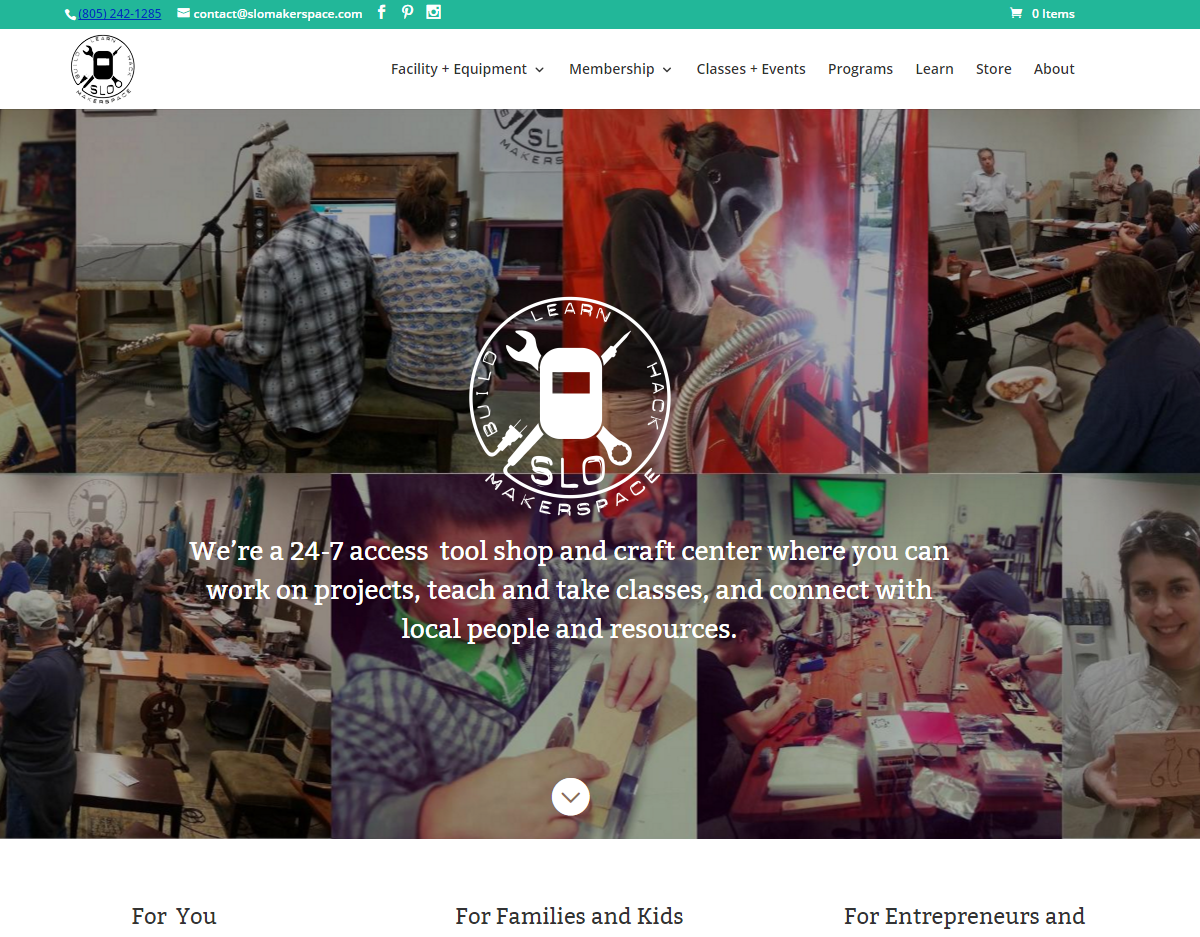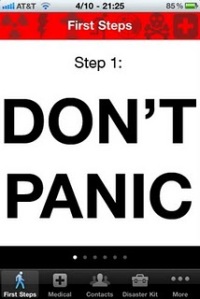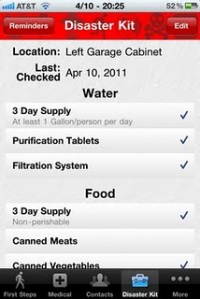Clint Slaughter, M.D
February 15, 2008
Walden University Master’s of Public Health Program
INTRODUCTION
Cancer of all types is a major public health problem that despite public health campaigns, is still growing in new and concerning ways. In our modern industrialized society, on a daily basis we are exposed to countless chemicals, toxins, and carcinogens in the form of fumes, preservatives, pesticides, fertilizers, waste runoff, and residues. Some of these substances have been proven to be harmful, some of them are speculated to be harmful, and for many of them, we have no idea as to their potential impact on our health. Even though we are certain of many of these health effects, the offending chemicals are still in our everyday foods, packaging, toys, household cleaners, household pesticides, building materials, and many other products.
Media attention has been increasingly drawn to human disease as a result of these types of chemical exposure, seen recently with Melamine tainted milk and eggs from China, lead in children’s toys, and the FEMA trailer debacle where hundreds of people became ill due to high levels of formaldehyde in the trailers used for disaster victims (Final Report on Formaldehyde, 2008). It is frightening to note that the very same building materials used in these types of trailers, which off-gas VOCs (volatile organic compounds) such as formaldehyde, are used in a wide array of home furniture products and home construction and have been for years (Tox Town, 2008). Recently, the safety of Bisphenol A, a chemical found in many plastic water bottles, food containers, and the lining of many tin cans, has finally been brought to the public’s attention. More and more of these issues will arise as the environmental concentration of these chemicals increase and more health problems are seen as a result. Some of these exposures cause vague symptoms, others cause identifiable toxidromes, and others have been shown to be carcinogenic. There are a number of studies that demonstrate cancer directly attributable to preventable exposures, most notably lung cancer from smoking and second hand smoke exposure (Centers for Disease Control, 2007). There is direct evidence for childhood leukemia caused by exposure to household solvents and pesticides (Freedman, Stewart, Kleinerman, Wacholder, Hatch, Tarone, et al, 2001), (Buckley, Robison, Swotinsky, Garabrant, LeBeau, Manchester, et al, 1989), and increased incidence of breast cancer has been linked to a variety of exposures, including hormonally active chemicals (Davis, Bradlow, 1995). A new report in the International Journal of Occupational and Environmental Health that focuses on breast cancer discusses the many proven and likely environmental contributors to developing the disease, such as ionizing and non-ionizing radiation, chemical exposure from air contaminants, pesticides, plastics, household cleaning products, hormones in meat and milk, cosmetics, personal care products, as well as occupational exposures (Nudelman, et al., 2009). What seems to be an emerging theme in modern chemical exposure is the hormonally active and endocrine disrupting nature of many ubiquitous chemicals, such as Bisphenol A, phthalates, dioxins, many types of pesticides,VOCs, perchorates, diethystilbestrol (DES) , and many others. Because so many of these chemicals, which are present throughout our homes, foods, personal care products, work in a similar fashion on the body’s endocrine and hormonal systems, there is undoubtedly an additive effect which is very difficult to quantify(Nudelman, et al., 2009). Since correlations have been made individually between these many chemicals and cancer or other illnesses, this has set the stage for the next generation of studies to further investigate and find stronger causal relationships as well as look at the additive and temporal effects of these exposures.
The population affected by this issue is broad, essentially any consumer that purchases products for their home, those purchasing processed and packaged food products and containers, as well as those working in industry with chemical exposures. Household chemicals in some way affect every person. There may not be overt symptomatology, but physiologic changes take place on a low level, increasing the risk for various types of cancers and disease processes. In certain professions, such as refining and farming, exposures to carcinogens are the norm.
This problem effects us all in varying levels, but can disproportionally effect those living in areas with concentrated levels of certain chemicals, those that regularly utilize potentially hazardous products, and especially those in developing nations where many modern potentially hazardous substances and products are produced or disposed of. Children, pregnant women, and the elderly are also at greater risk for developing disease from lower levels of exposure (Freedman, et al, 2001). Shifts in exposure can occur quickly as well, as in the aftermath of Hurricane Katrina, where thousands of people were displaced from their homes and many were provided trailers to live in by the Federal Emergency Management Agency (FEMA). It was found later that these trailers, made from standard off-the-shelf building materials, were off-gassing enough volatile organic compounds (VOCs) such as formaldehyde to cause significant health problems in many of those living in them (Final Report on Formaldehyde, 2008). Although it was dismissed by some, offering that these types of trailers were not meant to live in for prolonged periods, these very same materials such as pressboard, melamine, paints and sealants, are used in regular home construction as well and can affect any homeowner given the proper concentrations and conditions.
The true prevalence of illness as a result of low-level chemical exposure in the home or at work is unknown and is anticipated to be highly variable depending on socioeconomic status, location, and profession. Some of the more obvious and longstanding exposures such as cigarette smoke exposure have excellent data to support a strong causal relation. From extensive studies, we know that smoking can be blamed for 80% of lung cancers in women and 90% of lung cancers in men (Centers for Disease Control, 2007). Even though the prevalence and risk of chronic low-level exposures is unknown, the significance is great. In recent years, we are seeing more and more evidence of illness as a result of exposure to chemicals that are either unregulated or are approved by our government to be used without proper testing.
DIMENSIONS OF HEALTH
This ubiquitous public health issue is similar to many in that not only can individual education and change play a large role, but enacting policy and political change is also an imperative part of the process towards better safety. In order to make changes in an individual’s behavior, many facets must be addressed and using behavioral theories to analyze actions and tailor education and programs is essential. Because long-term exposures do not have much, if any, short-term feedback to the individual, some models such as the stages of change theory or the social learning theory are less applicable. Because it is important to emphasize the perceived dangers of long-term exposures as well as generate a shift in acceptable industry standards, the Health Belief model, Consumer Information Processing model, or Theory of Reasoned Action could all be applied to the problem (Schneiderman, N., et al, 2001).
First, however, we must explore what it is that most effects a consumer’s decision making process to buy one product over another. Again, because of the insidious and largely unknown long-term effects of exposures to toxic chemicals, it is more challenging to convince an individual of direct risk. When a person feels the negative effects of an action directly, it is easier to change behaviors to avoid these effects. However, for long-term and low-level chronic effects, it is much more difficult to motivate a change. An example is daily caloric consumption. Because weight gain is a slow process, eating a small amount of excess calories a day may cause a 10 pound weight gain over a year or more. It is difficult to make meaningful alterations in our diet when we do not see the immediate effects of the behavior. Another very strong behavioral factor in the reluctance to move from the current potentially toxic consumption to healthier alternatives is cost. Over the last century as manufacturing techniques have evolved and we have seen globalization of markets and production, there has been strong corporate pressure to decrease costs to be more competitive. This pressure commonly causes something important to be cut from the process, be it proper waste disposal leading to environmental contamination, dangerous or oppressive working conditions, inferior materials used that are potentially toxic, and other money-saving tactics that tend to increase the risk to consumers but at the same time bringing the cost to consumers down and increase the profit margins for the manufacturer. In a 2008 Gallup poll, it was found that with the economic downturn, 81% of those asked made more of an effort to find the cheapest price of a product and 49% switched to lower quality products due to cost (gallup.com, 2008). This confounds efforts further in that if the perceived danger of an exposure to a product is low, and true environmental and societal costs of a product are not considered, most consumers will choose based on cost. When faced with the gluttony of products available, often with confusing or inadequate labeling and unintelligible chemical names, and no warnings of potential hazards, it is no wonder that consumers often ignore the content, manufacturing techniques, or origin of products, instead looking for function and low cost.
From a psychosocial aspect, many factors play a role in consumer behaviors aside from the effects on the individual and their wallets, people are products to a significant extent of their environment and are influenced greatly by social perceptions and social norms. Our status quo places a great deal of trust in our retail system despite the fact that it is so poorly regulated. Consumers assume that if a product is on the shelves to be purchased, it is safe to use, and because many exposure-related illness cannot be traced back to a single product, there is little motivation to pursue a social change for many. Our consumerism has become so ingrained in our society through psychological advertising of products and the immersion of our culture in media, that a mistrust of everyday products, manufacturing methods, and “traditional” farming methods with pesticide, is often looked upon with disdain and dismissed as odd or irrational. Since it is the norm to use toxic household cleaners, pesticides, and building materials, there is no social motivation to make a change. Also, within a person or family’s social support groups, there is often little or no knowledge of issues with household chemicals aside from single-incident poisoning risks and therefore no impetus to seek out information on the dangers of chronic exposures. This disconnect between each individual consumer purchase and the trail of toxins, societal and environmental costs, and potential health threats that lie behind that purchase have reached a dangerous tipping point. In order to counteract the unfounded consumer trust and the obliviousness to these true costs, consumer education and community action are needed.
PREVENTION
There are already a number of public health initiatives designed to educate about poisoning episodes, where a child or family member accidentally drinks or is exposed to a hazardous substance in the home. The CDC has National Poisoning Prevention Week (Center for Disease, 2008), and the National Department of Health Services has “Poison Help”, a program to educate consumers on poisonings, hazardous chemicals, and how to seek proper treatment. However, education on how toxic many of the substances in our own homes and suitable, safe alternatives is lacking. We have also seen extensive and successful campaigns for breast cancer awareness that educate on the many environmental contributors to breast cancer. These types of grass-roots campaigns can very effective in engaging the public to take action that can then spur political and policy change.
At present there are multiple government agencies that have responsibilities in recognizing disease patterns and regulating exposures, including the Centers for Disease Control, the Food and Drug Administration, Department of Health and Human Services National Toxicology Program, the Consumer Product Safety Commission, and the Environmental Protection Agency. It seems that all of these departments have educational materials on hazardous products, but aside from the acute poisoning programs mentioned above, there are as of yet no major public health programs to educate consumers on product and exposure safety. These agencies are still operating on a “damage control” philosophy, where action is taken on an individual product or health concern when people actually start to become ill. Even with the proven problems from VOCs like formaldehyde with the Katrina trailers and the multiple cases of lead exposure and melamine contamination over this past year, we have yet to see any meaningful legislation to prevent this from happening in the future. Many of the aforementioned grass-roots organizations do seek to educate the public and instigate change, but many offer anecdotal evidence and supposition rather than peer-reviewed literature to support claims. Unfortunately there is a paucity of adequate research on the additive effects and long-term exposure risks of most of what we are exposed to today, and by making some untrue or sensationalist claims, even in the midst of legitimate data, these types of grass-roots efforts tend to undermine their own credibility. This is why it is imperative for these governmental agencies to take a more active and organized role to prevent cancer and other human health problems as a result of environmental exposures.
PUBLIC HEALTH POLICY IMPLICATIONS
In order for government agencies to begin the necessary regulation, essentially a revamping of our entire screening and approval processes for consumer goods and industrial safety exposures is required. We are already years behind European countries in outlawing various hazardous chemicals, and the integrity of our process needs to be reviewed, removing influence from companies and lobbyists that purposely present biased data or hide known hazards. The major paradigm shift will be that rather than approve until proven harmful, our system should disallow until proven safe.
The current system utilizes the quantitative risk assessment model, meaning that chemicals can be produced and products brought to market without any safety assessments. If any human health problems result from use or exposure to these substances, the onus is on the consumer or regulatory bodies to “scientifically” prove that harm is present before a product is discontinued (Cohen, Chavez, Chehimi, 2007). This system puts the advantage squarely in the hands of industry, making it very easy to produce and sell untested goods, but making it very difficult to have a product removed from store shelves or taken out of production. What makes the process even more difficult and less safe for consumers is that the health effects of low-level, long-term exposure to many chemicals is insidious and often nearly impossible to determine a definite cause. This is further confounded by the ubiquitous nature of our current industrial chemical exposure, with additive exposures from multiple sources or from chemicals with similar physiologic effects as we see with the many hormonally active substances discussed previously. To make matters worse, those with lower socio-economic status are often exposed to higher concentrations of toxic substances and although they are disproportionally affected, they have less access to healthcare as well as less of a voice to initiate change in the status quo (Cohen, et al, 2007).
One of the most effective policy changes that can be made to protect consumers over industry is to shift from the quantitative risk assessment model to the precautionary principle when dealing with chemicals and consumer goods. The precautionary principle basically means that products should be shown to be safe prior to exposing the public to them, rather than proving harm once effects are seen. It also places the financial and legal burden on the manufacturer rather than the public. Interestingly, the 1999 White House Policy Declaration on Environment and Trade “acknowledges that a precautionary approach is an essential element of the U.S. regulatory system (Cohen, et al, 2007) yet there has not been any meaningful change in policy or approach to the rising reports of exposure-related illness. The other major policy change needed is to initiate mandatory labeling requirements of products to include warnings of potential toxic effects, similar to cigarette packages. By requiring the labeling of all products with potentially hazardous substances, consumers will have more data on hand to make informed decisions when purchasing products.
Many industry advocates complain that by increasing testing and regulation of products and changing labeling requirements will drive up costs to consumers. Although this is true to some extent, from a public health perspective there would be significant resultant savings in healthcare costs from reduced illness secondary to exposure. Unfortunately, as with many public health issues, these types of healthcare cost savings are impossible to accurately predict and therefore are often not given serious consideration. Unfortunately, the costs of many of the products we buy and consume are artificially and underhandedly lowered by cutting corners with labor laws, waste disposal and the raw materials used, and it is natural for costs to go up when social justice, health, and environmental sustainability are brought into play.
By engaging and educating the public on the toxic nature of many of the everyday chemicals we are exposed to, and by forcing manufacturers to properly test and label their products, we will see a shift in consumer habits and a decrease in related disease states that we see today as well as those that we will uncover in the future. Much more research and monitoring is needed to generate the proper data to fully support many of these correlations, but more studies are coming out every month that show increasing human health concerns from environmental exposures, demonstrating that policy based on the precautionary principle wise.
REFERENCES
Abnet, C. (2007) Carcinogenic Food Contaminants. Cancer Investigation. 25:189-196
Buckley, J.D., Robison, L.L., Swotinsky, R., Garabrant, D.H., LeBeau, M., Manchester, P., Nesbit, M.E., Odom, L., Peters, J.M., and W.G. Woods. (1989). Occupational exposure of parents of children with acute nonlymphocytic leukemia: a report from the Children’s Cancer Study Group. Cancer Research. 49:4030-4037.
Centers for Disease Control (2008). Final Report on Formaldehyde Levels in FEMA-Supplied Travel Trailers, Park Models, and Mobile Homes. Retrieved on December 28, 2008 from: http://www.cdc.gov/nceh/ehhe/trailerstudy/
Centers for Disease Control (2007). Lung Cancer Risk Factors. Retrieved on January 118, 2009 from http://www.cdc.gov/cancer/lung/basic_info/risk_factors.htm
Cohen L., Chavez V., Chehimi, S. (2007). Prevention is primary: Strategies for community well-being. Jossey-Bass. San Francisco.
Davis, A. (2007) Home Environmental Health Risks. Online Journal of Issues in Nursing. 12:2. Retrieved from Academic Search Premier Database
Davis, D. (1981). Cancer in the Workplace. A Case for Prevention. Environment. 23:6
Davis, D., Bradlow, L. (1995). Can Environmental Estrogens Cause Breast Cancer? Scientific American. 273:4. Retrieved from Academic Search Premier Database
Davis, D., Muir, C. (1995). Estimating Avoidable Causes of Cancer. Environmental Health Perspectives Supplements. 8:103. Retrieved from Academic Search Premier Database
Freedman, D., Stewart, P., Kleinerman, R., Wacholder, S., Hatch, E., Tarone, R., Robison, L., Linet, M. (2001). Household Solvent Exposures and Childhood Acute Lymphoblastic Leukemia. American Journal of Public Health. 91:4
Gallup.com (2007) Surging Prices Change U.S. Consumers Behavior. Retrieved on February 15, 2009 from: http://www.gallup.com/poll/108892/Surging-Prices-Changing-US-Consumer-Behavior.aspx
National Institute of Health, National Library of Medicine (n.d.) Tox Town: Volatile Organic Compounds. Retrieved on October 19, 2008 from: http://toxtown.nlm.nih.gov/text_version/chemicals.php?id=31
Nudelman, J., Taylor, B, Evans, N., Rizzo, J., Gray, J., Engel, C., Walker, M. (2009) Policy and Research Recommendations Emerging from the Scientific Evidence Conneting Environmental Factors and Breast Cancer. International Journal of Occupational and Environmental Health. 15:1
Sanborn, M., Cole, D., Kerr, K., Vakil, C., Sanin, L., Bassil, K. (2004) Systematic Review of Pesticide Human Health Effects.
Schneiderman, N et al (2001). Integrating Behavioral and Social Sciences With Public Health. Washington, DC: American Psychological Association.
Sexton, K., Hattis, D. (2007) Assessing Cumultive Health Risks from Exposure to Environmental Mixtures – Three Fundamental Questions. Environmental Health Perspectives. 115:5
U.S. Department of Health and Human Services (2008). NTP-CERHR Monograph on the Potential Human Reproductive and Developmental Effects of Bisphenol-A. retrieved on September 5, 2008 from: http://cerhr.niehs.nih.gov/chemicals/bisphenol/bisphenol.pdf


 While working on my Master’s of Public Health through
While working on my Master’s of Public Health through  responses. Beyond the municipal and public health responses, the Centers for Disease Control (CDC) and Federal Emergency Management Agency (FEMA) recommend that you and your family prepare to take care of yourselves as much as possible in a disaster.
responses. Beyond the municipal and public health responses, the Centers for Disease Control (CDC) and Federal Emergency Management Agency (FEMA) recommend that you and your family prepare to take care of yourselves as much as possible in a disaster.













